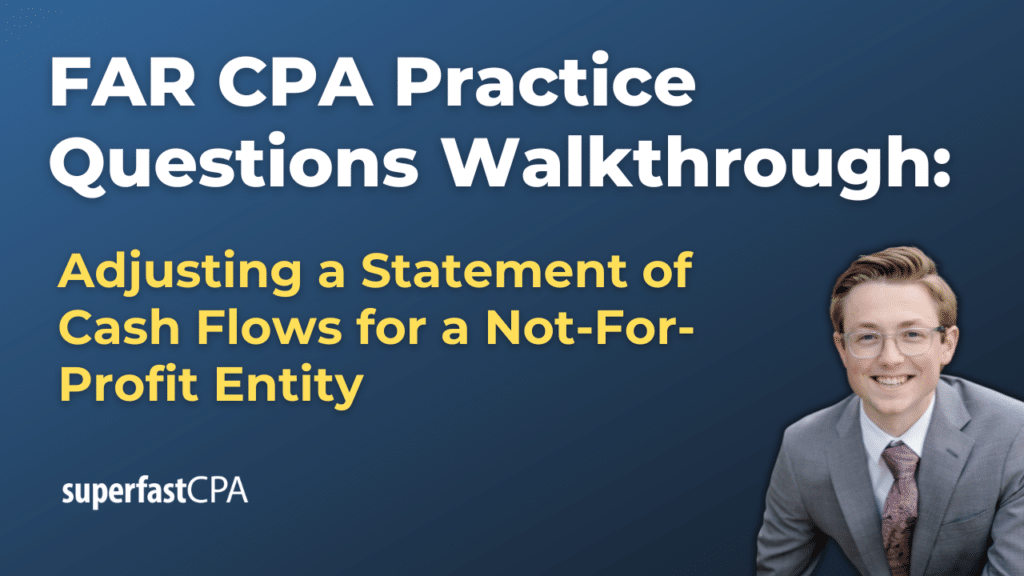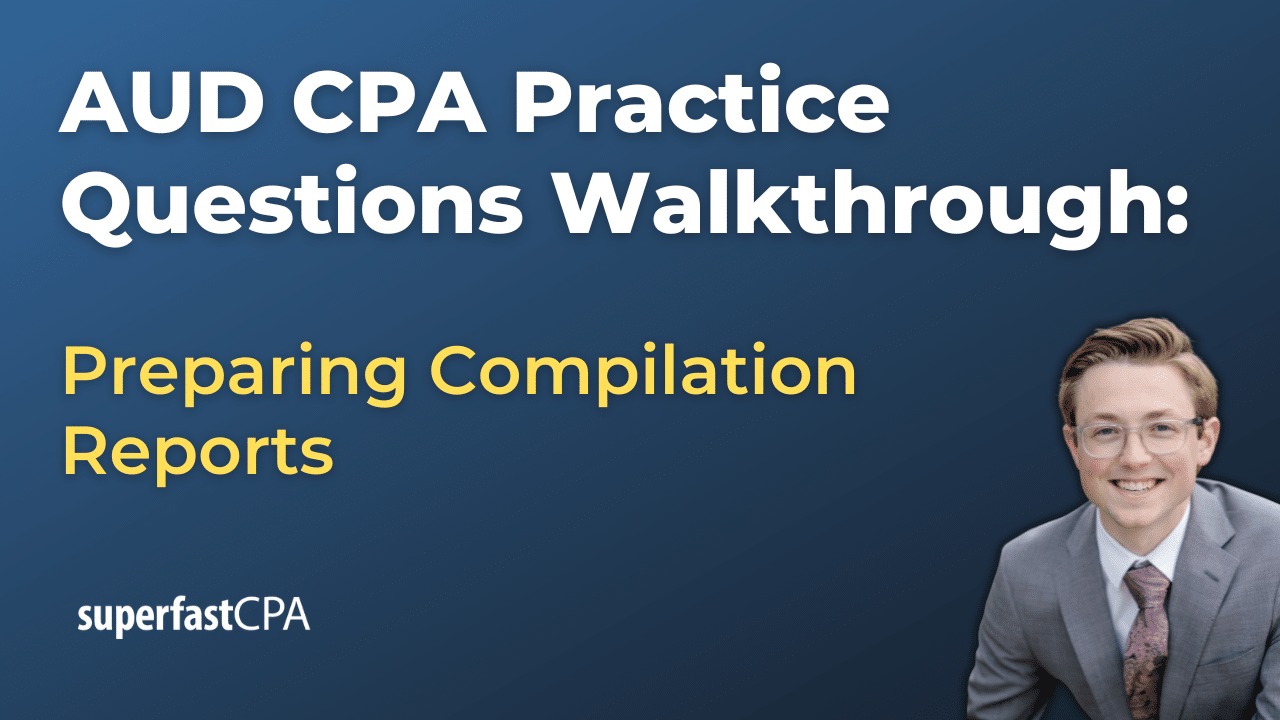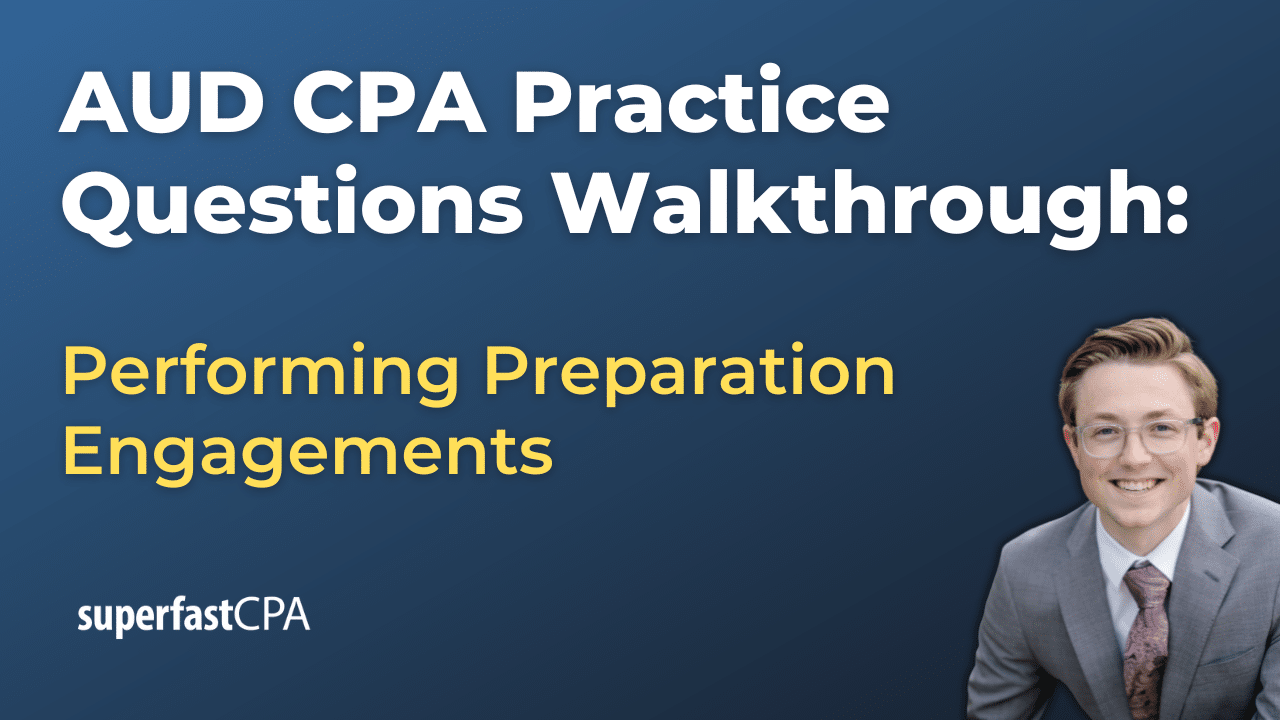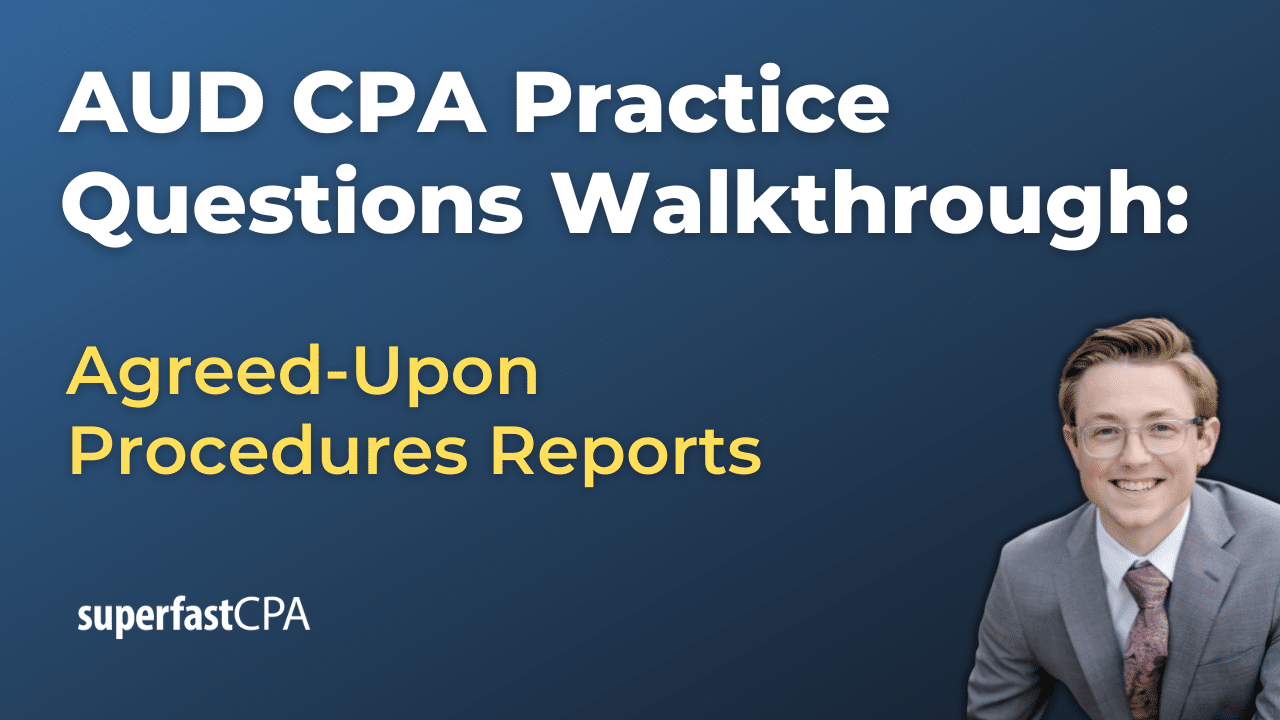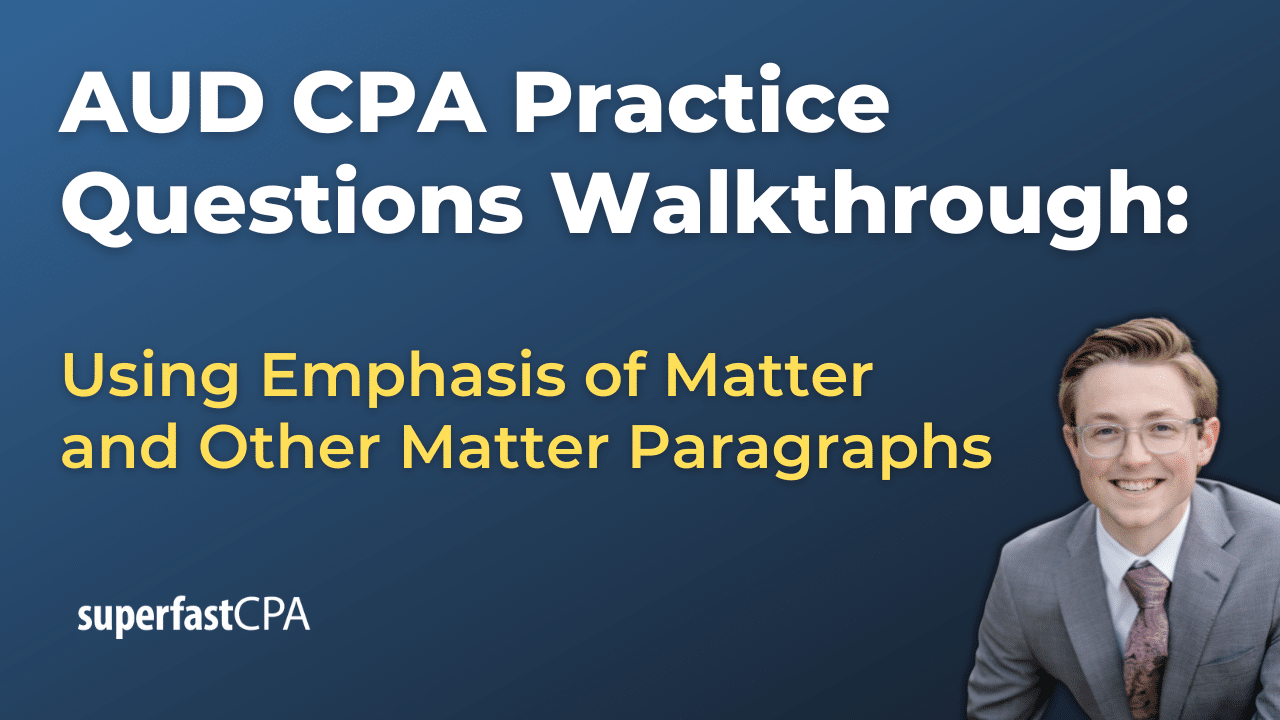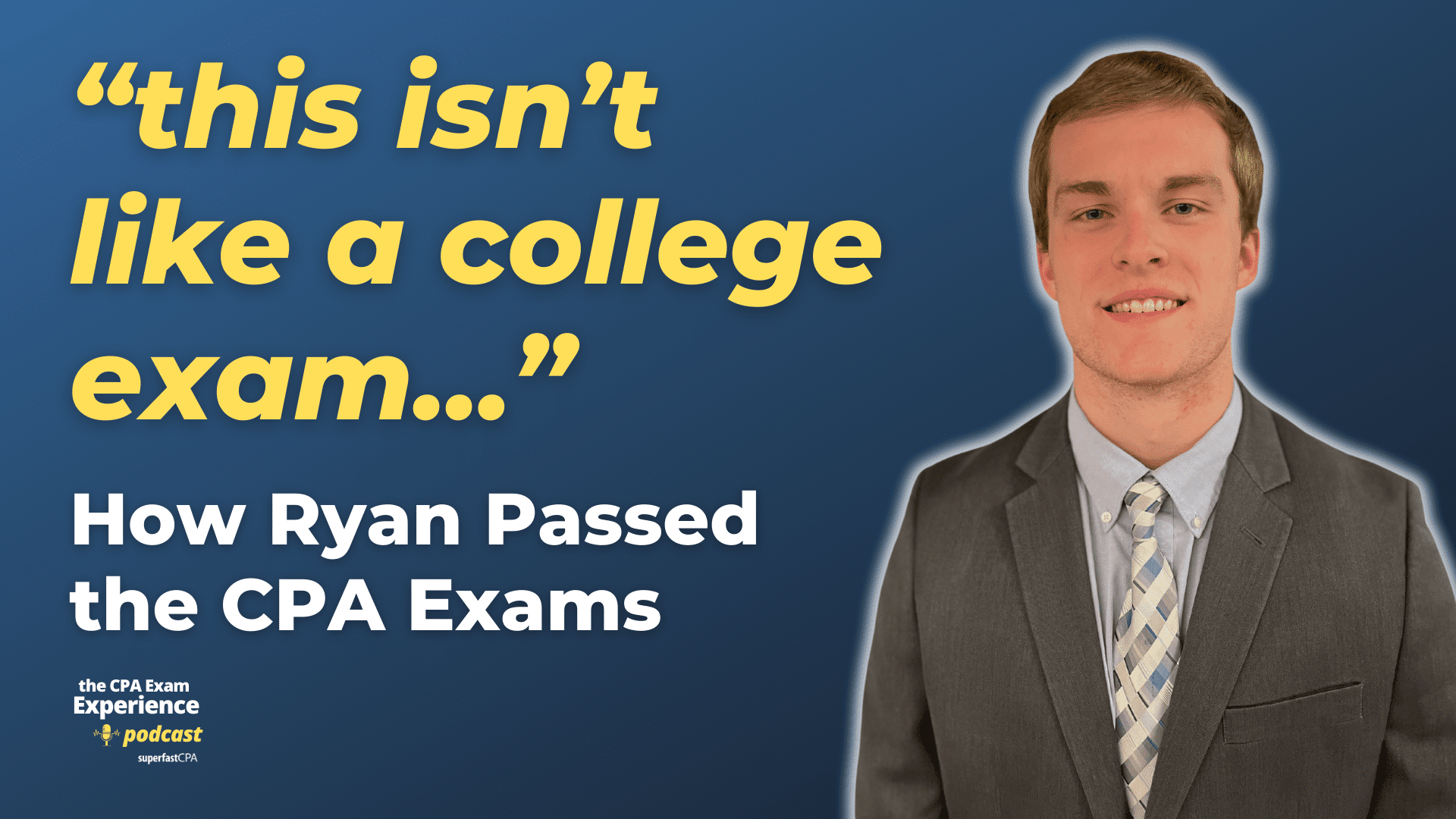In this video, we walk through 5 FAR practice questions teaching about adjusting a statement of cash flows for a not-for-profit entity to correct errors. These questions are from FAR content area 1 on the AICPA CPA exam blueprints: Financial Reporting.
The best way to use this video is to pause each time we get to a new question in the video, and then make your own attempt at the question before watching us go through it.
Also be sure to watch one of our free webinars on the 6 “key ingredients” to an extremely effective & efficient CPA study process here…
Adjusting a Statement of Cash Flows for a Not-for-Profit Entity
The statement of cash flows provides insight into the organization’s cash inflows and outflows across three categories: operating, investing, and financing activities. However, preparing this statement can be complex, and errors can occur, particularly when determining how to classify certain transactions. This overview covers common errors encountered in the statement of cash flows for not-for-profit entities and how to correct them.
Understanding the Statement of Cash Flows
A statement of cash flows tracks the cash generated and used by a not-for-profit entity during a specific period. The statement is divided into three main sections:
- Operating Activities: These include cash transactions related to the day-to-day operations of the organization. For not-for-profit entities, this often includes cash received from donors for unrestricted purposes, program service fees, and cash payments for salaries, supplies, and utilities.
- Investing Activities: This section includes cash transactions related to the purchase or sale of long-term assets, such as property, equipment, or investments.
- Financing Activities: Financing activities include cash transactions that affect the organization’s net assets, such as contributions restricted by donors for long-term purposes (e.g., building a facility or purchasing equipment) or repayments of debt.
Common Errors and Their Corrections
- Misclassifying Restricted Donations:
- Error: A common mistake is classifying donations restricted by donors for the purchase of long-term assets as operating or investing activities. For example, a donation restricted for the purchase of a new building might be incorrectly classified as an investing inflow instead of a financing inflow.
- Correction: Donations restricted by donors for long-term purposes should always be classified as financing activities because they impact the organization’s net assets. The subsequent purchase of the long-term asset (e.g., the building) should be classified as an investing outflow.
- Example: If a not-for-profit organization receives a $400,000 donation restricted for purchasing new technology equipment and classifies it as an investing inflow, this is incorrect. The donation should be classified as a financing inflow, and the purchase of the equipment should be classified as an investing outflow.
- Incorrect Handling of Gains and Losses:
- Error: Another frequent error involves the improper handling of gains and losses from the sale of long-term assets. Organizations might incorrectly add a gain from the sale of a work of art to operating activities instead of subtracting it, or vice versa.
- Correction: Gains from the sale of long-term assets should be subtracted from net assets in the operating activities section when using the indirect method because they do not represent cash generated from day-to-day operations. Losses should be added back.
- Example: Suppose an organization sells a work of art and records a $15,000 gain. If the organization incorrectly adds this gain to its operating activities calculation, it needs to subtract the gain instead to correct the net cash provided by operating activities.
- Misclassifying Asset Sales and Purchases:
- Error: Organizations sometimes misclassify the sale of long-term assets as operating inflows instead of investing inflows. Similarly, the purchase of these assets might be incorrectly classified as operating outflows instead of investing outflows.
- Correction: The sale of long-term assets should be classified as investing inflows, and the purchase of long-term assets should be classified as investing outflows.
- Example: If a not-for-profit organization receives $15,000 from selling old computers and classifies this as an operating inflow, the classification is incorrect. It should be classified as an investing inflow.
- Incorrect Inclusion of Non-Operating Cash Flows:
- Error: A significant error occurs when restricted donations or proceeds from asset sales that are unrelated to operating activities are incorrectly included in the operating section of the statement of cash flows.
- Correction: These non-operating cash flows should be excluded from operating activities and correctly classified as either investing or financing activities.
- Example: If an organization incorrectly includes a $250,000 donation restricted for equipment purchase in its operating activities, the donation should be reclassified as a financing activity.
Key Takeaways
- Classify Restricted Donations Correctly: Ensure that donations with donor restrictions for long-term purposes are classified as financing activities.
- Handle Gains and Losses Appropriately: Adjust for gains and losses on the sale of long-term assets correctly within the operating activities section when using the indirect method.
- Classify Asset Sales and Purchases Properly: Ensure that the sale and purchase of long-term assets are classified as investing activities, not operating activities.
- Exclude Non-Operating Cash Flows: Do not include cash flows that do not relate to the organization’s day-to-day operations in the operating activities section.

